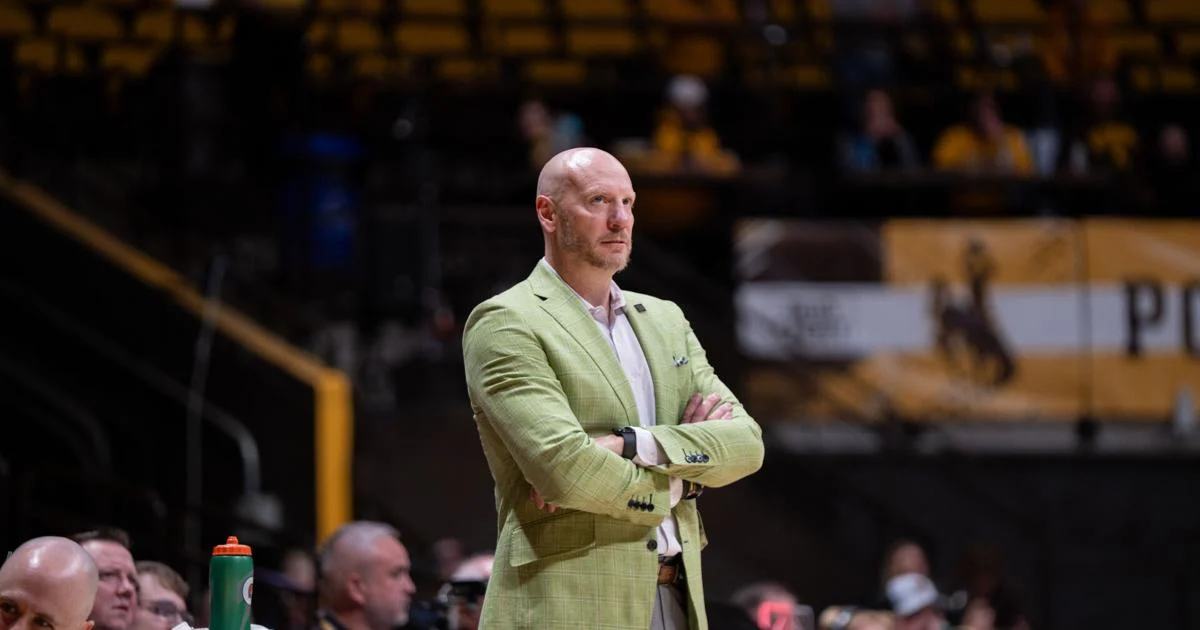NIL
Oregon an early favorite for touted 2027 OL Lex Mailangi

NIL
Who’s leaving Duke football as transfer portal opens Jan. 2

Duke’s Peyton Jones runs the ball during the second half of the Blue Devils’ 45-17 win over Elon on Thursday, Aug. 28, 2025, at Wallace Wade Stadium in Durham, N.C.
The News & Observer
With roster management and player retention a big part of coaches’ jobs, Duke’s Manny Diaz had some good news to share at Christmastime: Quarterback Darian Mensah and wide receiver Cooper Barkate are both returning for the 2026 football season.
Mensah, a redshirt sophomore this season and the ACC’s leading passer, had talked with Diaz and others about his NFL possibilities. But the former Tulane transfer decided to come back for a second year with the Blue Devils, where he again is expected to receive one of the top NIL packages in college football.
Barkate, who transferred to Duke from Harvard before last season, had 68 catches for 1,069 yards for the 2025 ACC champions, averaging 15.7 yards a grab, and scored six touchdowns.
The Blue Devils, who face Arizona State in the Dec. 31 Sun Bowl in El Paso, Texas, had just three players miss bowl practices, according to Diaz. One was offensive tackle Brian Parker II, who announced he would leave Duke early to enter the NFL Draft. Cornerback Chandler Rivers and defensive end Vincent Anthony Jr., also are preparing for the 2026 draft.
Duke also has another departure: running backs coach Chris Foster, who has joined the Florida staff after one year on the Diaz staff.
“The situation is always fluid, but I expect our retention rate to be very good, again,” Diaz said. Here’s a look at who the Devils will have leaving when the NCAA transfer portal opens Jan. 2:
Entering the portal
RB Peyton Jones: Became something of a forgotten man in the offense in 2025 with the emergence of Nate Sheppard and power running of transfer Anderson Castle. Played in four games after being Star Thomas’ backup in 2024 and rushing for 317 yards.
TE Vance Bolyard: The redshirt sophomore from Greensboro was used primarily on special teams in 2025. Played in 10 games in 2024.
OL Jack Small: A redshirt freshman this year, the 6-6, 300-pounder was used in just two games.
S Kenzy Paul: Redshirt junior saw little action in the secondary this season, playing in one game, the win over Clemson.
S Maliki Wright: Did not play as a freshman this past season.
CB Kyren Condoll: The California native played in one game in 2024 and again saw little action this season.
CB Vontae Floyd: Limited to three games because of injury in 2025, the sophomore played in 11 games in 2024 and was one of four true freshmen to letter for Devils.
DT Terry Simmons Jr.: The redshirt sophomore, a 6-2, 305-pounder, played nine games in 2025 as a backup defensive tackle and was at Duke for three seasons.
NIL
OU lineman Danny Okoye face of NIL deal to tout life-saving Narcan
Dec. 26, 2025, 5:40 a.m. CT
NORMAN – For University of Oklahoma defensive lineman Danny Okoye, his current spot – as the face of a social media campaign seeking to spread awareness of a life-saving drug for those who have overdosed on opioids – was a case of fortuitous timing.
Okoye is the first of a series of OU student-athletes who will participate in an NIL (name, image and likeness) deal with the nonprofit HarborPath of Charlotte, North Carolina, to promote Narcan, the brand name under which the generic drug naloxone is distributed.
NIL
Taylor column: Wyoming’s Wicks not using NIL as an excuse | University of Wyoming
NIL
How to make college football worse
Dec. 26, 2025, 5:03 a.m. ET
- Tennessee Sen. Marsha Blackburn has proposed the HUSTLE Act to create tax-deferred savings accounts for college athletes’ NIL income.
- The need for congressional intervention is questionable, given that other wealthy groups, like NFL players, do not receive similar legislative protection.
If the hollowness of the bowl season or the irrationality of the playoff system has you saddened by the state of college football, it could always be worse. Congress could get involved.
It’s already bad enough that NCAA apologists want Congress to grant college athletics an antitrust exemption. Now Tennessee Senator (and gubernatorial candidate) Marsha Blackburn, in a timely act of pandering, wants to give college athletes special tax-advantaged savings accounts – “for their own protection.”
Blackburn’s comically named “Helping Undergraduate Students Thrive with Long Term Earnings (HUSTLE Act) would allow certain college athletes to create tax-deferred accounts for their Name Image and Likeness (NIL) income.
Don’t get me wrong; I’m a big fan of saving and investing, especially in a tax-deferred vehicle. But the aim of this act ‒ somehow protecting young people from squandering their NIL riches ‒ raises an obvious question: Where exactly is the constitutional mandate (or even suggestion) for Congress to pass laws discouraging 19-year-old millionaires from buying expensive cars and jewelry?
If Blackburn is genuinely concerned about young, wealthy athletes squandering their money, why didn’t she start with the NFL? A widely cited 2009 Sports Illustrated article claimed that 78% of NFL players “face financial stress or bankruptcy” within two years of retirement. This figure was likely exaggerated, but a statistically sound study by the National Bureau of Economic Research found that 15.7% of NFL players file for bankruptcy within 12 years of retiring. Yet this hasn’t prompted any urgent Congressional push to save professional athletes from themselves.
If age is really the determining factor in financial responsibility, why is the fastest growing demographic of bankruptcy filers over 65? Why is the median age of someone filing for bankruptcy 49 and not 29?

Blackburn could, of course, propose legislation allowing college athletes to participate in the existing tax-deferred retirement accounts at their respective universities, but that would concede that the players are employees ‒ something universities want to avoid at practically all costs.
Not to be outdone by the Senate, the House of Representatives proposed the SCORE Act, which would grant NCAA institutions exemptions from antitrust laws – essentially codifying the illegal wage collusion the schools practiced for decades ‒ while also legally declaring that players are not employees of the universities that pay for their athletic services. Too many old timers simply can’t accept the end of decades of illegal (and in my opinion, immoral) athletic department business practices, so they are begging Congress to protect them.
Even if you concede the premise that 20-year-olds are incapable of making wise financial decisions and require assistance, why would Congress be the entity to turn to for financial wisdom?

David Moon, president of Moon Capital Management, may be reached atdavid@mooncap.com.

NIL
Chiefs Stadium Deal Is Insane
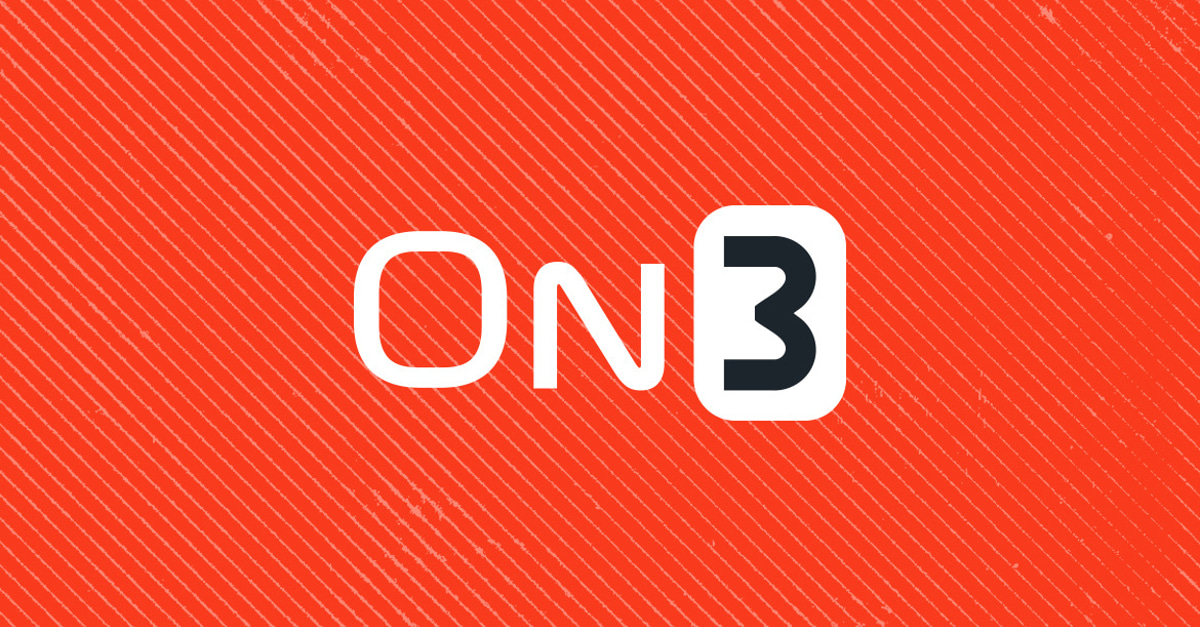
stl.pony said:
Feel like it’s largely being paid for by sales tax the new stadium development will generate.
Not in finance, so someone should absolutely check my math/analysis on this.
State of Kansas has an 8.25% sales tax. For the sales tax to generate 3 billion, the total sales would need to be about 36 billion. According to this article the Royals stadium and Arrowhead stadium collectively generate 55 million a year in tax revenue. (Don’t know what the analysis is to produce that; admit it could be wrong.) If you round it up to 60 million a year, the break even point is 600+ years.
If you take the numbers the Chiefs put out, 1 billion in economic impact for the region and 29 million in tax revenue per year. The break even point from tax revenue would be 1800 years?
I don’t know what is considered the region for the economic impact evaluation and how that changes based on if the stadium is on the Missouri side or the Kansas side of Kansas City. I also remember reading a report about the state fair of Texas that claimed that events like the state fair and sporting events don’t necessarily generate additional economic activity in a region, it just concentrates it into the event rather the wider community. (Admittedly, that could mean more tax revenue for one city in the region over another.) In my layperson’s opinion, a sports stadium deal like this doesn’t seem to be as smart of a decision as offering economic incentives to a Toyota or other non-entertainment business to move to your city.
NIL
Michigan urged to hire SEC coordinator over head coaches to replace Sherrone Moore
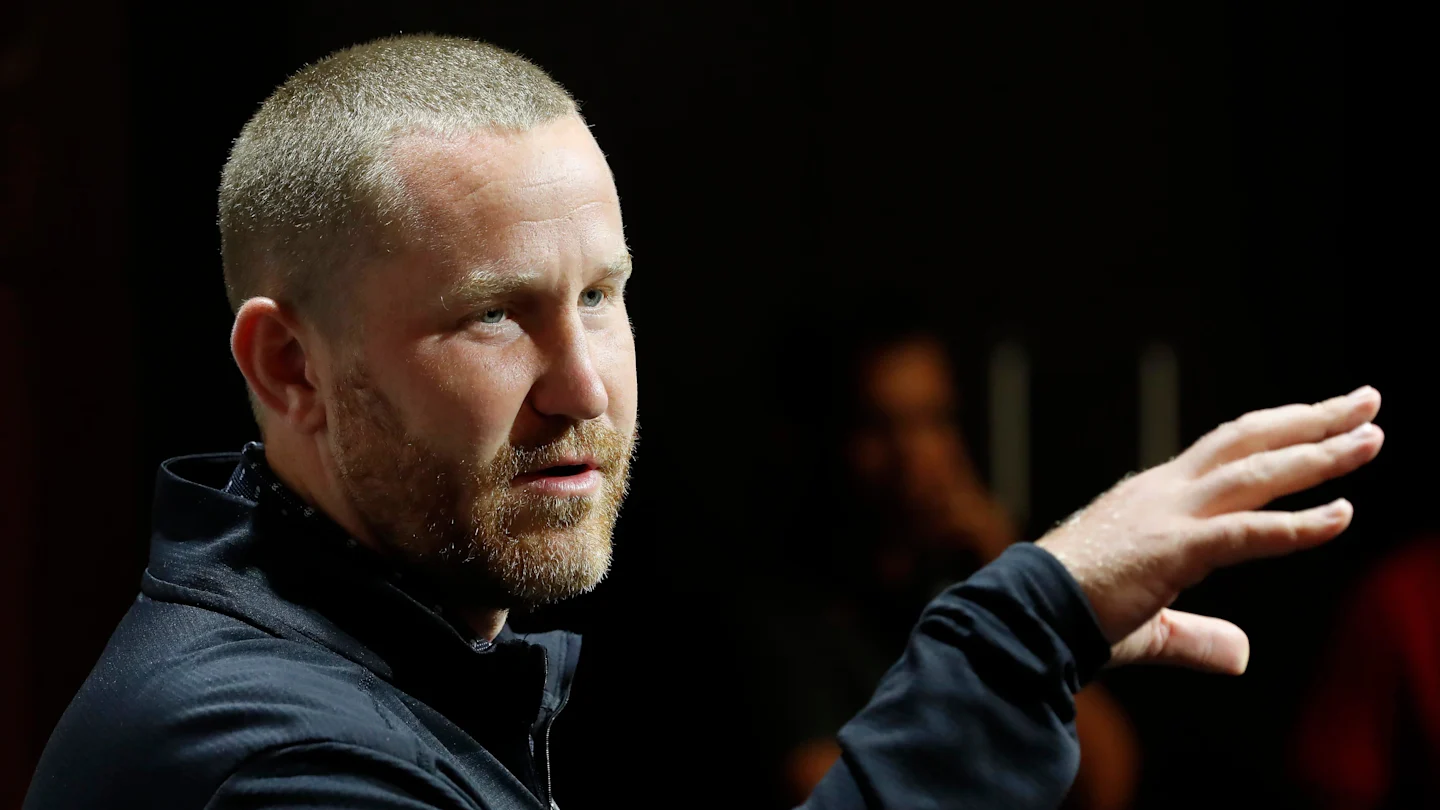
As Michigan’s coaching search drags on, some overlooked possibilities could be floating back to the forefront. After apparently striking out on established head coaches like Kenny Dillingham and Kalen DeBoer, one SEC coordinator is exactly such a possibility for the Wolverines.
In a recent episode of Andy and Ari On3, Andy Staples and Ari Wasserman pointed out that the current coaching carousel has been virtually obsessed with established head coaches. Kentucky hired Oregon offensive coordinator Will Stein as its next coach, but otherwise, schools have passed on coordinators in favor of coaches with head coaching experience.
Both Staples and Wasserman singled out Georgia defensive coordinator Glenn Schumann as a strong coaching possibility who Michigan should consider. “Why hasn’t he been in the conversation,” asked Wasserman. “He’s been intereviewed by schools, they just haven’t hired him,” noted Staples. “Normally, multiple coordinators would have either gotten these jobs or been finalists for these jobs.”
“If I were Michigan, I would hire Schumann over all the others,” said Wasserman. “I feel like if you’re Michigan, you want to get the guy that reshapes how you do things. It’s not that Jedd Fisch wouldn’t or Jeff Brohm wouldn’t….Don’t you want to go get the younger coordinator from Georgia who recruits his ass off and has been around big builds and has he defense playing like this at the right time and try to build you program around that?”

Schumann is only 35 years old, but has spent the last 17 seasons with either the Alabama or Georgia programs. He went to Alabama to be a student assistant coach under Nick Saban, then moved up to graduate assistant and then to Director of Football Operations.
When Kirby Smart left Alabama to take the Georgia head coaching job, Schumann went with him. First, he was the inside linebacker coach. In 2019, he added co-defensive coordinator to his responsibilities and ahead of 2024, he became the sole defensive coordinator
Georgia has historically been a very aggressive big-play-oriented defense, but Schumann has helped remake them on the fly. In 2025, the Bulldogs have held opponents to 15.9 points per game, second in the SEC, despite being near the bottom of the conference standings in sacks (tied for last), tackles for loss (next to last), and turnovers forced (13th).
Schumann was considered in 2023 for the Philadelphia Eagles defensive coordinator role, but hasn’t been significantly linked with another collegiate job. Despite his relative youth, his experience inside two of the foremost college football dynasties of recent vintage makes him an intriguing possibility, should Michigan decide to take a chance.
-

 Motorsports2 weeks ago
Motorsports2 weeks agoSoundGear Named Entitlement Sponsor of Spears CARS Tour Southwest Opener
-

 Motorsports2 weeks ago
Motorsports2 weeks agoDonny Schatz finds new home for 2026, inks full-time deal with CJB Motorsports – InForum
-

 Rec Sports3 weeks ago
Rec Sports3 weeks agoDavid Blitzer, Harris Blitzer Sports & Entertainment
-

 Motorsports3 weeks ago
Motorsports3 weeks agoJR Motorsports Confirms Death Of NASCAR Veteran Michael Annett At Age 39
-
Sports3 weeks ago
Elliot and Thuotte Highlight Men’s Indoor Track and Field Season Opener
-
Sports3 weeks ago
West Fargo volleyball coach Kelsey Titus resigns after four seasons – InForum
-

 Motorsports2 weeks ago
Motorsports2 weeks agoRick Ware Racing switching to Chevrolet for 2026
-

 NIL2 weeks ago
NIL2 weeks agoDeSantis Talks College Football, Calls for Reforms to NIL and Transfer Portal · The Floridian
-
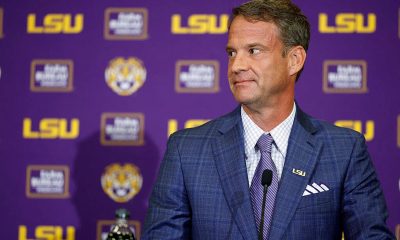
 NIL3 weeks ago
NIL3 weeks agoColleges ponying up in support of football coaches, programs
-
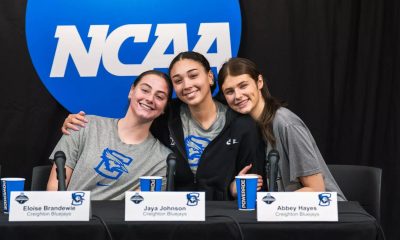
 Sports2 weeks ago
Sports2 weeks ago#11 Volleyball Practices, Then Meets Media Prior to #2 Kentucky Match





